Text
The Annotated Arabian Nights
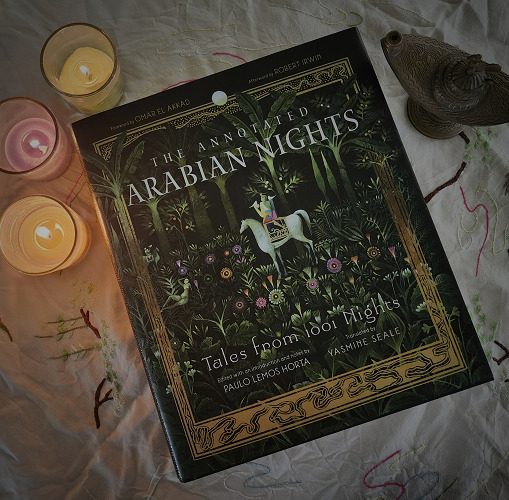
The Annotated Arabian Nights represents a of selection of folktales from what is (without the orientalist moniker) properly titled the One Thousand and One Nights, giving a sample of a newer contemporary translation by Yasmine Seale alongside analysis.
Beginning with the frame narrative of King Shahriyar who after betrayal will turn murderous towards his wife and every other woman he marries, until Shahrazad commences a nightly narration, this edition then includes some of the earliest “nights” in Arabic manuscripts in addition to stories with two popular figures Dalila and Sinbad. Plus, notably the inclusion of the stories from French which Antoine Galland heard via Syrian writer and traveler Ḥannā Diyāb. (Such as Aladdin also available in English on its own I’ve reviewed previously). Followed by a section with Galland’s diary entries where he roughly transcribed a larger number of these tales, this translated by professors Ulrich Marzolph and Anne E. Duggan.

At over 700 pages this beautiful book certainly boasts a wealth of contextual material. Different writers through the forward (Egyptian-Canadian novelist Omar El Akkad), introduction (scholar Paulo Lemos Horta who also edited and notes the volume), and afterword (British writer Robert Irwin) chart personal experiences or history regarding the One Thousand and One Nights and the power of stories.
Another highlight is the entire section devoted to several translators through the centuries reflecting how the Nights were approached and received in the West. This naturally starting with the first to French by Galland then six English translators, all with excerpts. (The example from Galland’s presented via an unofficial English translation of the time). Plus, an interview with four contemporary translators of the Nights outside English (working from the Arabic to Portuguese, Danish, Italian, and German respectively).
There is also a section entitled “Retellings of The Arabian Nights” with works spanning 1845-1921 by five famous writers in English (Charles Dickens, Christina Rossetti, Edgar Allen Poe, H.P. Lovecraft, and O. Henry). Yes, the presence and muse like quality of the Nights is rather unescapable, even becoming a trope. As the introduction previously points out while referencing numerous notable English writers (as do some of the annotations). So, does one truly need to “demonstrate the influence of the stories over the centuries” by giving a portion in an edition to a selection of English retellings? Throughout, the book is graced by many images taken from various editions, theatre, film etc. across the arts helping to represent the profound reach both globally and through time the Nights have. Too at the end of the book before the cited works there is a whole list offered on recommended further reading etc. encompassing various media.
On a fun note (and because I know MTG players) an example first from the list under games is the 1993 Magic the Gathering set Arabian Nights. Among other cards (search Wizards Gatherer database under the set name) of course which featured the indomitable Shahrazad.

In other words, readers whose curiosity is peaked can explore a lot of other material for themselves. Those who find and open this annotated edition are likely primarily seeking within its pages stories from the Nights and the insight into them.
At least why I have this annotated edition is twofold. Because it does contain all the so named “orphan stories” from French. But, primarily for a taste of the much-anticipated new English translation by Yasmine Seale of the One Thousand and One Nights. Although this book does not quite reflect Seale’s thinking on the Nights, her translation is engaging and clear in attention to cadence, rhyme, especially verse, and the voice of Shahrazad. While, like her visual poem “Sleepless” of Shahrazad’s waking eye, illuminating texts for modern audiences and up out of previous liberties taken by many. A labor sure to produce something glorious when that edition arrives in full. In the time being, the Annotated Arabian Nights is an immense book more suited to coffee tables and academic interest.
The Annotated Arabian Nights: Tales from 1001 Nights edited by Paulo Lemos Horta and translated to English by Yasmine Seale is available in print and digital from Liveright Publishing
#arabic literature#world literature#french literature#one thousand and one nights#Yasmine Seale#bookopoly#on a friend's TBR#cw: alcohol confinement death kidnapping infidelity misogyny murder racism sexual assault sexual content slavery torture violence#cw:animal cruelty & death antisemitism blood cannibalism drug domestic abuse fire incest infertility miscarriage pregnancy suicidal thought
0 notes
Text
Written in Blood by Caroline Graham
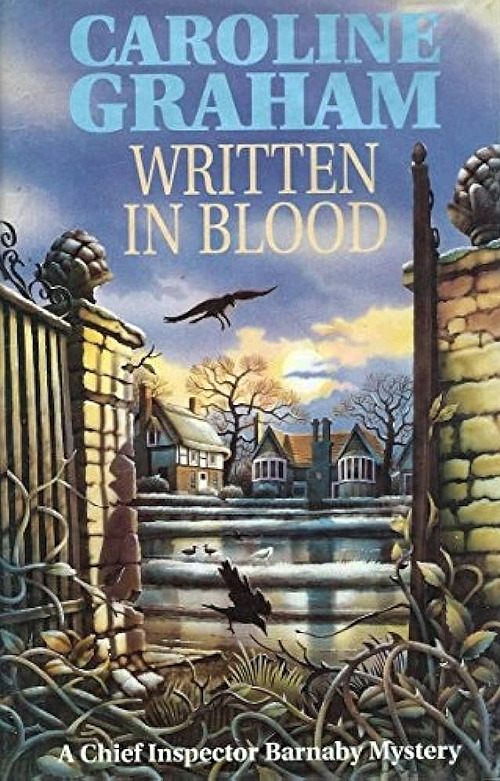
‘We’re always being told, Mr Jennings—’
‘Max, please.’
‘Max. That we should only write about what we know. Isn’t that a bit limiting?’
‘I don’t think it’s meant to be taken in the narrow, literal sense. One can know things—quite wild, fantastic things—to be true in the imagination.’
Of English writer Caroline Graham’s novels my favourite is Written in Blood. The fourth in the Inspector Barnaby series published in 1994, also adapted to TV as the first episode of season one of Midsomer Murders appearing in 1998.
After the Midsomer Worthy Writers’ circle hosts a famous novelist for an evening, one among the group of aspiring authors is found bludgeoned to death the next morning. From among a besotted admirer who deals in antiques, a boorish drama schoolteacher and his wife a budding children’s book illustrator, a bygone socialite and her widowed sister-in-law, a retired military aficionado, and the famous guest— who had reason to commit murder? Moreover, against the private seemingly run-of-the-mill Gerald Hadleigh at that. But it turns out who is an enigmatic figure that had more than skeletons in the closet.

I won’t of course spoil all the revelations. Given stories and writing at the core there’s also an amount of passion, process, craft, along with hopes and changed fortune. At points one wonders if some of the author herself isn’t reflected in this book. In a work going on thirty years now there’s something of an even older feeling yet, Written in Blood manages many of the subjects with a dose of sensitivity. Though falling a little short every so often too. Certain depictions could be contentious. Then particularly one character while facing some consequences should be in more legal trouble too. While the screen version takes a fair amount of artistic license, it shows even less of the fallout regarding this.

In the world of mystery, stories featuring amateur detectives are usually the ones I gravitate toward. So, it was a bit of a surprise to be drawn to the Inspector Barnaby series when I was younger— and still. The books further the basis for the highly successful Midsomer Murders television series. Which, with five of the seven novels adapted, has continued much past its literary inspiration for over a quarter of a century. Famed for its high body count (there’s a bit less death in the books among other differences), at times unusual murder methods, along with a who’s who of actors over the years.

DCI Tom Barnaby with a nice family and a generally collected façade besides a chatty style, plying witnesses and suspects as if they’re simply sharing tea, is a character then of little wonder if readers are taken in by perhaps as well. Or maybe too the offer of a larger cast of often eccentric characters, whose lives slowly peeled back in minutiae to almost become a character study. Otherwise, it could be there’s just enough truth to pretty little villages with complicated secrets underneath. Plus, soothing diversion in creative worlds with puzzles where answers are obtained, people who want to help and perhaps in the end some justice of different forms.
The Inspector Barnaby books, or Midsomer Murders aren’t for everyone. On the page even a bit darker. But there is something very compelling in secrets and unresolved injustices of the past coming devastatingly to light, the tangled lives, tragedy, love and hate.
Written in Blood by Caroline Graham is available in print and digital (including audio)
Midsomer Murders is available on DVD and several streaming services depending on region
#mystery novels#written in blood#Caroline Graham#midsomer murders#books to TV#bookopoly#cw: murder stalking classism emotional abuse infidelity adult/minor relationship rape suicide homophobia misogyny transphobia whorephobia x#cw: mention terminal illness death child (sexual) abuse child sexual exploitation
0 notes
Text
Poison Ivy #19-21
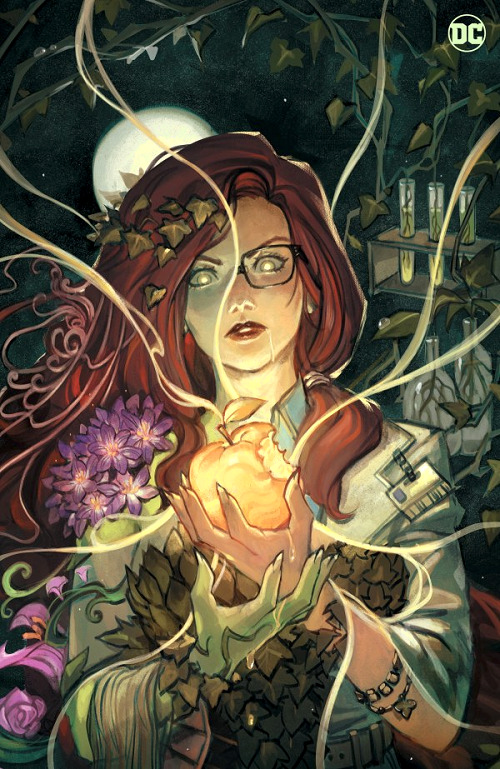
Checking in with the Poison Ivy comic series again, we’ve reached a set of trio issues #19-21 forming “Origin of Species”. This writer G. Willow Wilson’s efforts in marrying together the contributions by many creatives over decades who have taken on the matter of Poison Ivy’s origins. Which if that sounds ambitious, you’d be right.
In media Ivy’s origins have often been recounted either by others or herself. However, because of the developments that led here in previous issues, this secret origin is too for all ones knows a last testament. With that frame dare readers hope for a more sapient, innermost version?
To begin issue #19 sees Pamela Isley off to a Seattle university as an undergraduate in a plant biochemistry program fatefully headed by Dr. Jason Woodrue. Wanting to best her peers (leading botanists Alec and Linda Holland plus Philip Sylvain), entranced both by the work and Woodrue, falling for a sexual relationship with him among other manipulations. When the next round of funding for the experiments runs out, Pam makes her first foray into crime.
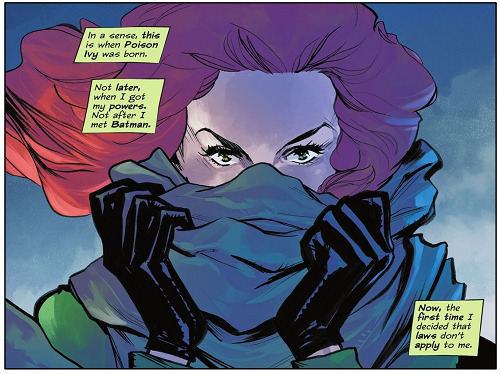
Next for issue #20, as things with Pam and Woodrue continue to escalate, Wilson once more does not forget a relatively recent character in the schemes of things… Bella Garten.
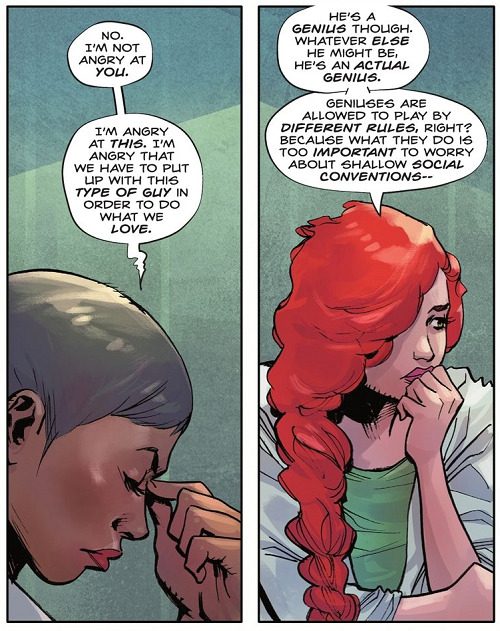
Her last appearance to this in a flashback in #2, it’s been several issues. So, let’s take a minute to discuss Bella.
As a fellow student and love interest, specializing in botany and genetics going on to earn a doctorate, Bella Garten or the The Gardener as she would become first appeared in Batman #107 in 2021 creation of writer James Tynion IV. Plus, part of the thread of story involving Poison Ivy during the Fear State event and into the past. The one-shot Batman Secret Files: The Gardener (written by Tynion and art by Christian Ward) was also included in the first collected edition of Poison Ivy. However, the file, another secret origin comic is less about Bella Garten and more an attempt to appeal to Batman to help Ivy (around the Tom King Everyone Loves Ivy period) running through decades of Ivy’s character (with adjustments). Part of the history there exposed, particularly certain actions of Gardener, is uncomfortably weird.

Yet again an example of major violation done to Ivy by someone she trusted. The revelation resulting in a short confrontation between the two in Fear State Omega. (The issue also marking the end of Tynion’s Batman run with Art: Riccardo Federici, Christian Duce, Ryan Benjamin, Guillem March & Trevor Hairsine, Colorist: Chris Sotomayor and Letterer: Clayton Cowles). Where Ivy is having none of the presented defense.
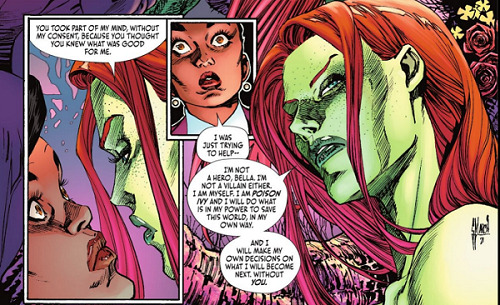
In sum a character that functions more as a plot point, another retcon while trying to put it all (back) together. Yet, coherency that has been needed. Despite the American superhero genre (in)famously being one where seemingly everything and nothing is canon, something still important. So too, the first ongoing series for Poison Ivy not just ought to but, does endeavor to plumb over 50 years of a character’s existence. While bringing what each creative uniquely can. It’s worth asking then if Bella is made more too under Willow’s writing.

Wrapping up casting Ivy’s mind back, issue #21 arrives at the full Poison Ivy. Once again, becoming a human experiment (volunteering!) and transformation. An old life lost, the new leading to Gotham— yet for a unique green reason.
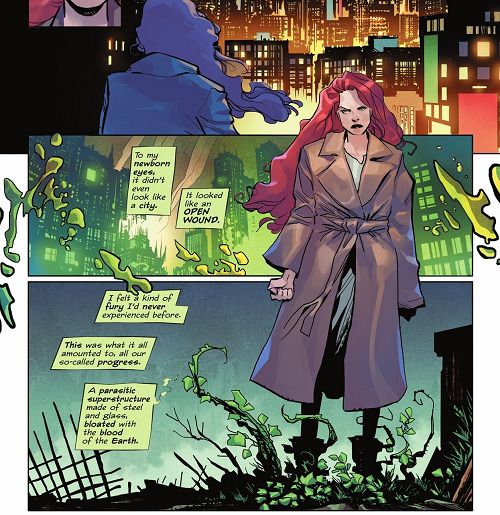
As a woman with growing abilities, confidence in using them, the law is just an obstacle to justice. But of course, conflict and differences plus mistrust with Batman result with Ivy in and out of the terrible Arkham Asylum. This would be the early pre-Harley days too, even though the Ivy costume calls back to the influential BTAS.

Then what can I say about the art I’ve haven’t already in other reviews. Jessica Fong continues to deliver pretty and pretty gross (body) horror main covers. (On the latter it took a while to prepare myself to read the previous issue #18. Though it’s not shocking that bodily autonomy, something Ivy’s origins raise too, makes the list of also current matters the series depicts.)

Marcio Takara definitely has set a bar as the main artist for the series. I wish he was drawing every issue. Though nothing against the other artists who have so far done so. It’s just that I generally wish for a creative team to be able to remain consistent through a run. I’ve praised colorist Arif Prianto consistently too. On the other hand, since these installments are Ivy believing she’s dying and mired in her distant past, I’m surprised there isn’t more of a difference exhibited of that. Why not really experiment with the paneling, designs, and color palette. Just as key the letterer Hassan Otsmane-Elhaou can switch things up to good effect. Actually, if part of the team working on Poison Ivy had to change briefly maybe here was where to do that instead.
In the end these issues of the comic series offer an origin stressing the choices and chances. A Poison Ivy that refutes being pathologized, focuses less on victimization, and more of her own creation and missteps along the way. It’s interesting too, if not still poignant, to look back to the first few issues of Poison Ivy. In soon coming up on two years, the series has issue by issue after issue grown and been recognized as an Outstanding Comic Book by GLAAD. After reflecting on a new(ish) past it continues forward.
#poison ivy#dc comics#G Willow Wilson#Marcio Takara#Arif Prianto#Hassan Otsmane-Elhaou#Jessica Fong#long post#cw: toxic relationship verbal abuse medical experimentation forced institutionalization
4 notes
·
View notes
Text
Hep Cats of Boise by Al Hess
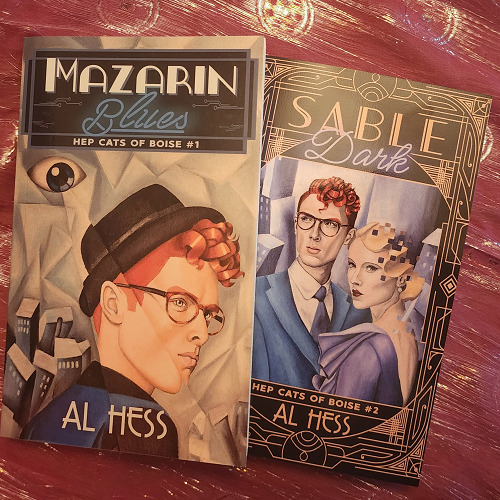
Their mistrust of new tech would be overpowered by the desire for innovation and convenience. Megacorps would pounce on this, downplaying what happened with Wave and insisting all people needed for a bright, productive future was stuff and more stuff. Some new tech would arise that stole people’s data and privacy, and they wouldn’t pay attention until something horrible happened. Again.
The decopunk Hep Cats of Boise series by Al Hess with a setting beginning near the end of 2065 presents the US as more a bland conformist dystopia. Nor are things exactly happy holidays for coroner assistant Reed Rothwell (gay). Resenting the mandate that took effect since he was too young to even have a say requiring people to have AI assistants in their bodies (with a few exemptions), Reed is even less pleased to be selected for the first wave of a new beta version. Mazarin, (genderfluid asexual panromantic) as the AI wants to be called in lieu of Reed refusing to bestow a name, unlike the previous default has developed dare say a personality if not more. But if AI has achieved true self-awareness and could be worthy of personhood, that also means the possibility for the best and worst of humanity along with it. Rumors swirling of the betas being responsible for recent deaths and violent actions of some among the select few chosen for the upgrade only add to Reed’s anxiety and paranoia. Can he take a chance keeping the so far devoted Mazarin in his head? Or should he illegally terminate his AI and dive deeper into the jazzy 1930’s imbued Deco lifestyle he’s kept hidden in the face of prejudice? Meeting his new boyfriend and fellow Decoist Jax (pansexual) has Reed yearning for more than touching the tattoo artist’s decorated skin. Jax also introduced him to Em (agender pansexual) owner of a speakeasy who also can rid Reed of the AI among offering other illegal services. Both are easier to trust than the Wave tech megacorp responsible for the AIs in the first place. But all of this is bigger than Reed. If Mazarin is really like a person, would termination be like taking a life? Plus, a friend of one of Reed’s coworkers too received a beta, one on first impression that is much less nice.
From 2021 the Hep Cats of Boise is one series with oomph. Initially catching my eye sporting throwback covers, also snazzy illustration by author Al Hess, with other character portraits inside (Mazarin’s male image is reminiscent of American actor Clark Gable). There is danger in romanticizing bygone eras, yet people in an exploitative tech weary world turning to the past, forming a new subculture is far from ackamarackus. Though there might be some bits where the worldbuilding by Hess could use a little more extrapolation. The strength in these stories is characters more than shine among the stakes, tension, and a dash of romance. Many people can go along with sacrificing much for convenience. In a real world where tech overlords wield immense influence, privacy is increasingly encroached upon, and forms of culture devalued, it may be too easy to see a future like in this series. Though there is comfort in leaning into who you are, hope in good people, and maybe some technology too. All of it makes for a compelling read.
Mazarin Blues and Sable Dark by Al Hess are available in print and digital from Kraken Collective
There are also two short stories titled Em’s Gator Club and Gin Cat Jive available digitally
#lgbtq+ books#scifi books#Al Hess#hep cats of boise#mazarin blues#sable dark#pansexual character#panromantic character#bookopoly#blue cover#an exciting book#cw: alcohol drug use blood death hospitalization injury kidnapping mental illness profanity sexual content stalking suicide violence#cw: brief ableism and biphobia mentions of CSAM and domestic abuse
1 note
·
View note
Text
March 2024

Spring is still a bit off in my area, but I hope the change in seasons offers refreshing times for all of you.
Read for March:
Let the Right One In by John Ajvide Lindqvist
Violent Phenomena: 21 essays on Translation
1 note
·
View note
Text
Violent Phenomena: 21 essays on Translation

language is a dwelling, and as a result, that different languages establish different dwellings in the world, different lights and different gods, different works.
—Between Crié and Ècrit by Monchoachi tr. Eric Fishman
Violent Phenomena: 21 essays on Translation is an anthology of writing by 24 contributors featuring a breadth of personal experience with culture, language, translation, publishing, and grappling with colonial and imperial legacies. As the introduction puts it ‘Above all this book is a challenge to inherited assumptions about translators and translations being neutral, making the case that every aspect of translation is political.’
Several of the contributors and their work I was familiar with prior. While with others this book is the first I’ve encountered. Yet these essays all echo very long recurring discussions. Reflecting my personal preferences the highlight is Monchoachi’s Between Crié and Ècrit from 2007 in English translation from the French also with afterword by Eric Fishman. Then “Blackness” in French: On Translation, Haiti, and the Matter of Race by Kaiama L. Glover (previously Race and the Aesthetic in French and Francophone Cultures) and Why Don’t You Translate Pakistanian? by Sawad Hussain are likewise particularly engaging. Among the many other essays all worth going over.
If one has an interest in translation and decolonisation pick up this book.
Violent Phenomena: 21 essays on Translation edited by Dr. Kavita Bhanot and Jeremy Tiang is available in print or digital from Tilted Axis Press
Contributors: Gitanjali Patel, Nariman Youssef, Kaiama L. Glover, Aaron Robertson, Khairani Barokka, Anton Hur, Ayesha Manazir Siddiqi, Eluned Gramich, Sofia Rehman, Layla Benitez-James, Mona Kareem, Lúcia Collischonn, Sawad Hussain, Yogesh Maitreya, Sandra Tamele, Hamid Roslan, Onaiza Drabu, Shushan Avagyan, Monchoachi (tr. Eric Fishman), Elisa Taber, M. NourbeSe Philip, Barbara Ofosu-Somuah and Madhu Kaza
#translation#decolonisation#Violent Phenomena: 21 essays on Translation#essay anthology#nonfiction#bookopoly#cw: colonialism imperialism racism xenophobia ableism genocide Islamophobia pandemic terrorism
1 note
·
View note
Text
Let the Right One In by John Ajvide Lindqvist
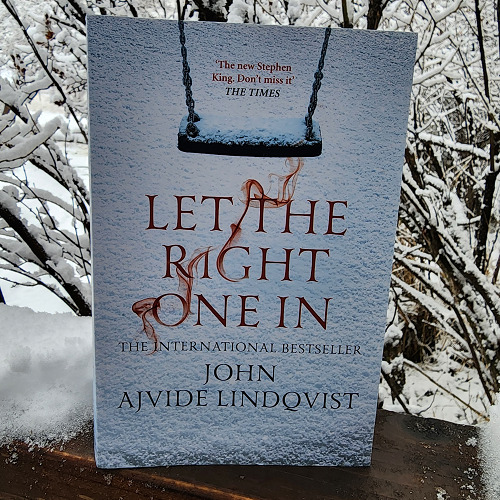
Which monster do you choose?
During a trend of romanticized vampires in fiction, firmly situated in horror Swedish author John Ajvide Lindqvist debuted with Let the Right One In. A sizable novel where the characters’ lives are a horror story in more ways than one, just as there are different kinds of monsters. Yet, amongst the darkness is too a queer love story.
In 1981 twelve-year-old Oskar nurses fantasies of killing the bullies who torment him. While also keeping a scrapbook of clippings on infamous murders. However, the latest newspaper headlines of a killer currently stalking the grim Stockholm suburbs is closer to home than he first realizes. Arriving one night are two strange new neighbors. A man named Håkan along with a child, Eli. Eli and Oskar slowly take a liking to each other. Eli also encourages Oskar to fight back against the school bullies. Further, weaving together the perspectives of more residents as events progress and situations escalate Blackeberg, nor anyone, will ever be the same.
Now, I don’t greatly read horror. Despite this, vampires are fascinating to me. Let the Right One In moreover is one of my favourite such titles. Making since 2004 quite a mark too. Besides appearing in editions across the world such as English translated by Ebba Segerberg, the story has also received numerous adaptations across mediums. Unfortunately issues around how the various rights were acquired from Lindqvist occurred. So, no doubt also due to his involvement, the best on screen is still the 2008 Swedish film directed by Tomas Alfredson.
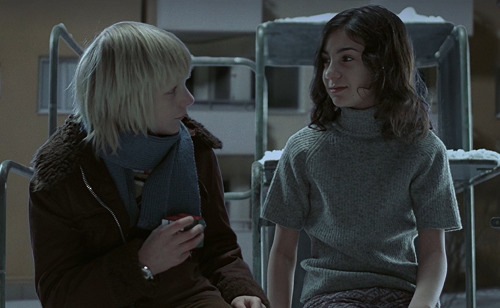
In fact, if anyone is a bit hesitant because of how intense some of the book’s content is, the film is what I would recommend trying first to get a taste. Likewise eerie in parts yet more understated, even ethereal. Because the novel is frankly a lot (so much discussion about it as well). But ultimately richer in many ways. Absolutely also following up with the short story Let the Old Dreams Die which in a roundabout way gives an idea of how things work out between Oskar and Eli.
Let the Right One In still fits well into vampire tradition as a tale of the tragic, youth, desire, and death. Recommended if one can step deep into the dark.
Let the Right One In by John Ajvide Lindqvist is available in English, translated by Ebba Segerberg, in print and digital (including audio) from Quercus Publishing
#horror books#vampire fiction#Swedish literature#let the right one in#John Ajvide Lindqvist#Låt den rätte komma in#book to movie#bookopoly#genre you don't normally read#cw: blood body horror bullying gore injury murder pedophilia#cw: alcoholism animal death car accident fire genital mutilation substance abuse#cw: self-harm suicidal thoughts suicide trafficking#cw: mention cancer death of parent homophobia racism
0 notes
Text
February 2024

Happy Leap Day!
Read for February:
All The Hidden Paths by Foz Meadows
Doctor Who Planet of Fire by Peter Grimwade
0 notes
Text
Planet of Fire by Peter Grimwade

‘Don’t be worried my boy,’ continued the old man. ‘It can be a most rewarding experience, and a blessed relief for those who are consumed in the flames. Doubters are such unhappy people.’
‘Is it not sometimes good to doubt?’ asked Malkon gravely.
The time-travelling Doctor in need of a holiday lands on a beautiful island on Earth. But there’s little rest as a surprising connection soon surfaces amongst his companion Turlough holding back secrets, the malfunctioning shapeshifting android Kamelion, and a near drowned American tourist called Peri. Soon all are on an unplanned trip as the TARDIS is whisked to the volcanic planet of Sarn. There the inhabitants are facing catastrophic disaster while enmeshed in religious frictions. Moreover, and perhaps worst of all, is the appearance of the evil Time Lord the Master.
The requisites for Doctor Who’s 1984 Planet of Fire, as it has been succinctly put by its writer Peter Grimwade, ‘was the story’. A narrative seeing more than one character leaving, a new companion—and American at that, the Master for an antagonist, plus the very real island of Lanzarote. For someone such as Grimwade involved with Doctor Who in different capacities going back to the 1970s it also marked more than one end. It would be the director Fiona Cumming’s last for the TV series too.
So, forty years on what to make of Planet of Fire?
Shall we start by saying it is kind of hot? Not just fiery volcanic desert island hot but with heated issues and underlying eroticism.
Also, male homoerotism. Grimwade’s novelisation begins with a scene not in the show of an Ancient Greek vessel going down in a storm, during which one of its male merchant passengers from Rhodes clutches a kouros (i.e. young nude male statute) of the god Eros to quote ‘like a lover’. This paired centuries later by an alien Trion spaceship likewise going down on another planet. But not before releasing emergency beacons, small metallic mushroom shaped objects exhibiting a triangle symbol, one to end up of all places on Earth of course. Then, as seen on screen, both kouros and beacon to be lifted from the ocean by an archaeological team in the later part of the 20th century.

It bears mentioning Grimwade was gay, among other names involved in this story and Doctor Who. Additionally, he did love Greece and so envisioned the earthbound setting of a fictious Greek isle. Notably the earthly paradise goes unnamed in the novel, but the location filming for the serial instead was on one of the famous Canary Islands. For the classic series only the third filming destination used outside the UK and further farthest chosen at the time. Grimwade, however, was merely given photographs for his purposes. Frustrating it would also seem as he later judged the serial not working well on the screen given the cost and an excuse to go ‘on a gang bang and a nice holiday!’ Unsurprisingly too, by his own admittance had he experienced the place himself the ‘story would have been utterly different’. One can ponder how, but various details (some the writer was aware of) certainly stand out. Although the Canary Islands were known to the ancient Greeks, archaeological evidence, such that draws Peri’s professor stepfather accompanied by family, reveals Roman contact rather than Greek and further later than the period referenced.

Plus Lanzarote also does double duty for the volcanic alien world of Sarn. Grimwade may have spent a lot of time writing about aliens, but his style is one with its roots in reality. Is it surprising for a someone like him to say, 'I find it virtually impossible to write about aliens.' and 'in terms of creating an alien culture, I find it an empty exercise.' Writing on a truth (influences of classical antiquity again speckling Grimwade’s writing) Lanzarote is more contemporarily a Spanish island. But if one wanted to draw inspiration for culturally developing the people on Sarn from an older indigenous population, there are the mysterious Guanches related to the Imazighen more than the Bedouin. Since colonisation also comes up in the story interesting for the anti-colonial implications. Or ideas of the barbarous for that matter. Though the costume designer John Peacock apparently did look to ethnically complex North Africa. The aesthetics can unfortunately combine into a reading of Arab. Further the conception of the Sarns is another plot point that varies from screen to novel. One that could pose discussion on how self, and culture are formed and defined.
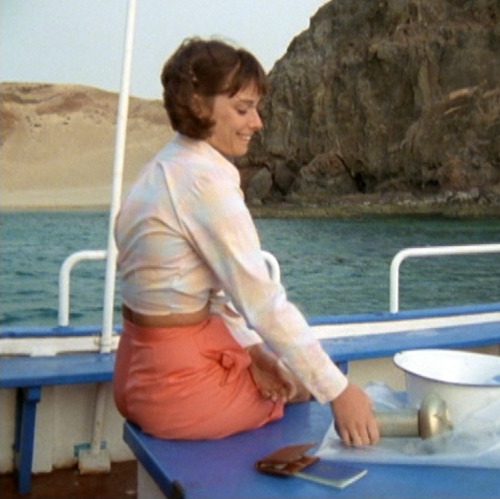
But back to the eros for a moment, on screen it’s visually clear the new companion character of Peri is supposed to, well, sex up things a bit. Peri (full first name Perpugilliam) Brown was outlined as an 18-year-old college student majoring in botany and, American. (Though portrayed by Nicola Bryant an English actress new on the scene with dual nationality due to marriage.) Grimwade also expressed ‘Writing for the Americans wasn’t easy either—you kind of resort to cliché ’.

Too Peri’s 40-year-old stepfather (though first imagined as older until Dallas Adams was cast) apparently the stuff of nightmares. A few lines of Peri’s would lead to speculation of an abusive childhood. (The exact nature of the abuse theorized as sexual goes back at least to the later 1980s. But not until closer to two decades later would a couple authors eventually expound on this in print form.) For its part the text of the novel version of Planet of Fire reads on the recurring nightmare how Peri was a little girl ‘sent to bed in disgrace’ pleading for Howard to not ‘put out the light’. Also later characterizing Howard’s persona with a ‘vein of ruthlessness’ through Peri’s strong emotions transferring on the automaton Kamelion who at points takes on the Howard disguise. In any event, retrospectively Peri’s character was unfortunately quickly overshadowed by the direction of the programme.

Nor did it go unnoticed for Planet of Fire that Turlough’s too dressing lighter for the climate and shedding some clothes. But to be serious the story is in large part finally Vislor Turlough’s backstory and send off. So Grimwade was a fitting, if in the end ironic, choice having been tasked to introduce the character back in 1983’s Mawdryn Undead. Carried off too with greater effect than the short lived Kamelion, meeting its demise in Planet of Fire, a real robot which had become more of a technical complication than an interesting companion. Plus, Turlough is the latter. Or cut from a different cloth at least. In Mawdryn Undead an alien mysteriously trapped in an English boys’ school on Earth. (The college used actually one Grimwade attended himself.) So desperate to escape (even not much caring if it was by death) clad in a similarly somber uniform coming under the cruel influence of another enemy of the Doctor, the Black Guardian, who tasks him to kill the Doctor. Through ten stories Turlough’s faults, though failing in murder cannot be counted as one, and his eventual progression to friendship with the Doctor brought something. Thanks to his actor Mark Strickson too. Even if companions were restrained and crowded out by other priorities as happened, the question of just what was going on with Turlough was a question. Flipping around more than the Doctor’s question mark suspenders changing direction in shots. While Turlough’s more the imperialistic brat in the novel, at points even using derogatory language, at the same time there are some really affecting moments involving him in Planet of Fire I wish were also on screen.

Speaking of reveals, it’s an intriguing choice the novel cover features an illustration by Andrew Skilleter of the Master (Anthoy Ainley) with Kamelion, two faces in a composition reminiscent of the Roman god Janus. Planet of Fire does offer the Master as a twofold villain. Ever demanding obedience, and largely enjoying every second of wielding influence at points booming ‘like a hell-fire preacher’. Bringing added turmoil as the Sarn Elders first believe he’s sent from their Fire Lord.

Contrasted by the Doctor once again attempting to allay superstition and avoid loss of life both in violence and cataclysm. A conversation between the Doctor and the Unbeliever Amyand (James Bate) on the mountainside about the Sarns, again because their origins vary between versions, goes much differently. Then if one tries to sum up Peter Davison’s Doctor in one word (though that wouldn’t do him justice) it’s probably akin to ‘nice’. So, the Doctor’s actions near the end of the story are memorable. The novel offers more insight into the Doctor’s dissonant emotions before ashen he resumes the reassuring ‘I’m… okay.’ Another much interpreted last line by the Master ‘Won’t you show mercy to your own…’ is replaced. As well the show’s poignant final scene with the, preoccupied with burning oblations, Chief Elder Timanov (Peter Wyngarde) and his faith the biggest divergence.
Then zealotry is too an important theme. As Grimwade put it ‘interested in the extremities people go to with their feelings about religion and ideology.’ The novel peppers the text with references to Greek myth, Israelites, Christianity, Islam and even an in-universe nod to the Sisterhood of Karn. But apparently a subject too hot to handle by direction from the show’s script editor, Eric Saward, the religious situation on Sarn ‘couldn’t be too strong an issue.’�� At a time when audiences could easily look around them for parallels (even today), a decision that was wise or a loss? As Grimwade reflected ‘there’s a lot of very deep experience that the programme has touched on in an oblique way.’
In the end it must be more than coincidence that my favourite stories of the Fifth Doctor’s era were either directed or written by Grimwade. And if directing and writing were two different skills, they were at least linked in Grimwade’s mind as he described in writing ‘you’re directing the ideal’. Too novels gave an opportunity where ‘a lot of shortcomings can be rubbed out’. Particularly the novelizations of those serials Grimwade wrote, he once claimed were ‘the best thing about his creative involvement with the world of Doctor Who.’ Sadly, Peter Grimwade would pass away in 1990. But liking to be remembered for his stories, I remember Planet of Fire and him still today.

#scifi#doctor who#planet of fire#peter grimwade#tv novelisation#long post#bookopoly#free choice read#cw: colonisation death and of parent fire incarceration religious frictions racial slur mention civil war allusions to child (sexual) abuse
0 notes
Text
All the Hidden Paths by Foz Meadows
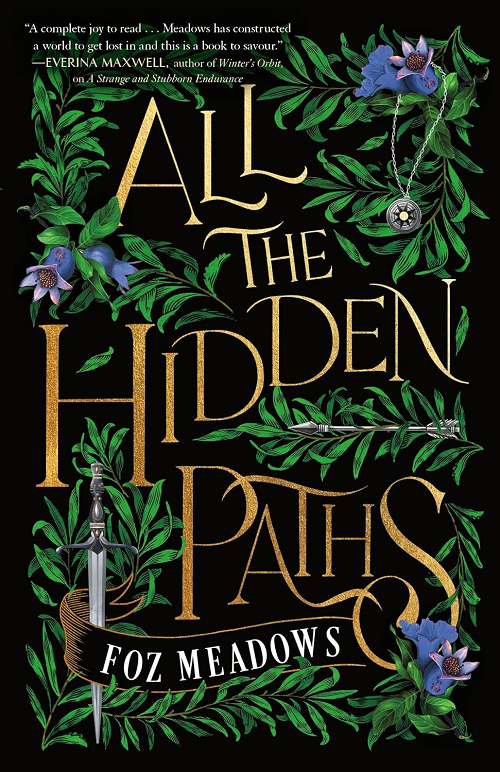
"Ralia is a fist raised against itself in defence of itself. It’s my mother. It’s people, the same as anywhere else. Just people, and things, and the stories they use to justify treating the one as the other. I don’t ever want to go back, and I hate that I can’t. I do want to go back. Or maybe I just want to want to, I don’t know. It’s all the songs I’ve ever learned. It’s the only place I know how to belong, and I’ve never belonged there once.”
After Foz Meadow’s A Strange and Stubborn Endurance in 2022, (highlighted in my 12 Autumtnal Reads with Pan Rep post), the end of 2023 saw its follow-up All the Hidden Paths.
Scant weeks after the intense events of the hefty first novel the noble newlyweds Caethari and Velasin, summoned to the Tithenai capital city of Qi-Xihan, are once again embroiled in winding politics, assassination attempts, and murder. Along with an additional Ralian gay lord named Asrien entangled in the high stakes of the couple’s precarious future.
This sequel is another long, angsty, and tense mature romantasy book. The reverberations from the last never far as continued suffering piles up. Yet despite how once more involving the plot is, too the matter of home, queer identity and aftermaths key, readers still might desire its characters sooner catch a breath where their lives and loved ones aren’t constantly in danger. Or perhaps further subtler kinds of threat at which there are efforts. Where All the Hidden Paths stands apart the most is introducing a polarizing third perspective. (Though the audiobook disappointingly does not add a new narrator for Asrien). One can hope Asrien comes off at least as interesting to read as for the author to write. However, the denouement feels a bit more forced, and questions can linger. I wouldn’t mind more. In fact, it may very well be of greater need now than before.
All the Hidden Paths by Foz Meadows is available in print and digital (including audio) from Tor Books
#lgbtqia+ books#fantasy books#all the hidden paths#foz meadows#bi/pan character#bookopoly#over 500 pages#cw: violence blood grief PTSD#cw: alcohol blackmail cursing death drugging fire homophobia murder sexual content sexual assault dubcon under-negotiated kink suicide#cw: animal death classism domestic abuse sexism
1 note
·
View note
Text
ICYMI (I did) PEN America released in late October 2023 an updated report on the most pervasive form of censorship in the US, carceral book bans.
0 notes
Text


☆☆ NEW SERIES ANNOUNCEMENT ☆☆
Last Quarter
Story and Art by Ai Yazawa
A supernatural mystery of two star-crossed lovers from the creator of Nana!
Struggling to adapt to life with a new mother and sister after her father’s remarriage, Mizuki meets a blue-eyed man playing guitar on the street in Shibuya and is powerfully drawn to him. How far will she go to see him again?
After a brush with death, young Hotaru meets Mizuki for the first time in a dream. The next day while out looking for her missing cat, Hotaru wanders into an abandoned mansion and comes face to face with the girl she met in her dream!
Coming in September
280 notes
·
View notes
Text
January 2024

Settling in to a new year, so far it has been busy. Plus a family member hospitalized. So not reading as much. Hopefully I will tick off a few more books next month, which also has an extra day this being a leap year.
Read for January:
My Cat Yugoslavia by Pajtim Statovci
1 note
·
View note
Text

Another plus of moving is I now live close to a public library. It is a small library but with a vibrant community. I had a chance to browse a couple of its comics sections on a recent visit. I was excited to see on prominent display one of my favourite sci-fi titles, Valérian and Laureline.

1 note
·
View note
Text


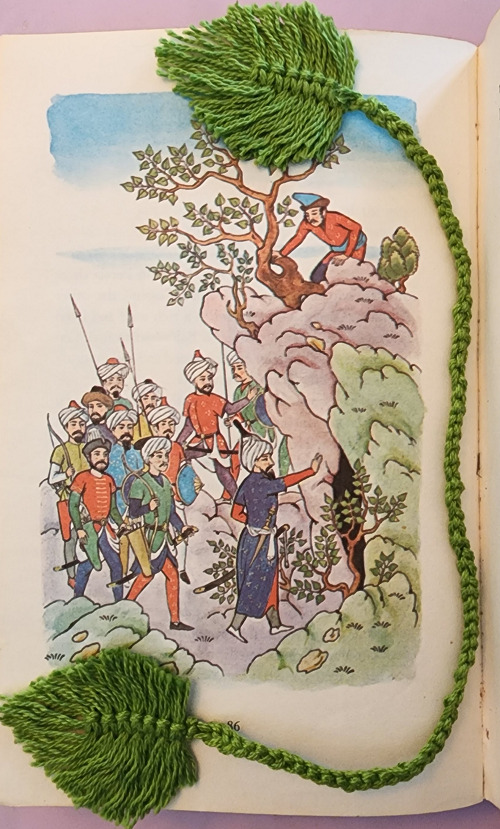
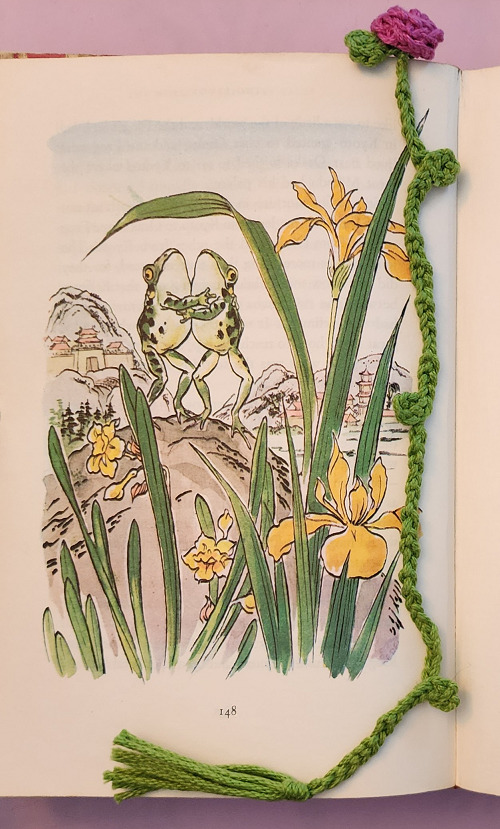
Winter means I have more time for crafting. While inside with the snow falling, I decided to make a few bookmarks from yarn.
4 notes
·
View notes
Text
My Cat Yugoslavia by Pajtim Statovci

The worst of it was that I started thinking the same kinds of things as they did. I wondered what job I might end up doing, how much work I could do, how long it would take for my career to pick up. I wondered what grade I’d get for my thesis, I lost sleep wondering whether it would make more sense to work for a few years and then go back to my studies.
My Cat Yugoslavia by Pajtim Statovci, translated by David Hackston, is an astonishing odd bildungsroman debut novel. Told in two perspectives, first Bekim a college student in an existential crisis who became a refugee as a child immigrating from Kosovo to Finland with his Albanian parents and then the side of his mother Emine. Between Bekim hooking up with various men the book is also full of symbolism. He has had a terrible fear of snakes and cats since childhood yet buys a boa constrictor as a pet and lives for a time with a horrible anthropomorphic cat he meets at a club. Cats too appearing in Emine’s narrative beginning in 1980 her youth in a rural village, difficult marriage, fleeing Kosovo and life in Finland. Though I don’t think the alternating perspective works well as the voices aren’t very distinct. Yet, it gives the impression of two books in one. Something of a sensation in Finland and abroad Statovic’s book is for those who appreciate the offbeat.
My Cat Yugoslavia by Pajtim Statovci is available in English, translated by David, in print and digital (including audio) from Pantheon Books
#lgbtqia books#my cat yugoslavia#Pajtim Statovci#bookopoly#orange cover#cw: animal death sexual assault domestic violence child abuse toxic relationship homophobia islamophobia racism bullying war#cw: suicide death of parent sexual content hate crime
1 note
·
View note
Text

Cute bookish sticker I bought from The Shelfie Chronicles.
0 notes